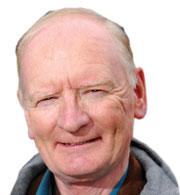It cannot be too long before the football authorities allow referees to consult video evidence during play in order to resolve contentious issues. This would make the officials’ job a little easier as well as ensuring that justice is done.
For so many years referees have had to rely on what they actually see (or hear). Before the introduction of goal-nets in 1892 it could be problematic even to agree on the score. As one ref described the situation (in Cassell’s Saturday Journal): “Some quick passing and a cross-shot into goal frequently result in the ball just going inside the posts. ‘Smart’ goalkeepers in these circumstances pick up the ball and kick off from goal, as if it had gone outside. The attacking team appeals as a matter of course but the referee, unable to keep up with the ball, gives the defenders, as magistrates give prisoners, the benefits of the doubt.”
The same official recalled an incident in an amateur match, in the days when 'gentlemen' were assumed to be morally superior to professionals: “Bogus claims were made by one side until I became wearied so I said to one of the players during a lull in the game, ‘You know very well that that last shot was not a goal.’”
“’Of course I did,” he replied, “But I didn’t know that you did, and nothing is lost by appealing.’”
This season the FA has given its sternest warning yet against 'mobbing' referees and so far the response has been encouraging.
To be fair, Fulham have rarely resorted to this dubious practice. There were several decisions in the recent Birmingham match that antagonised the Hammersmith End but the players got on with the game. On two important occasions the referee's judgment was clearly correct: Michael Madl's second yellow card and the penalty for Floyd Ayite's clumsy challenge. Birmingham's first penalty (which Button saved superbly) looked more questionable but, seen again on video, Madl's tackle was badly timed.
Fulham's failure to score might have been ascribed totally to Birmingham's barnacle-like and suffocating tight marking. But three nights later Burton Albion proved just as impenetrable by standing off and playing deep.
It was not until the 93rd minute that the irrepressible Ryan Sessegnon snatched the goal that prevented another home defeat. Albion's goalkeeper Mc Laughlin was a trifle unfortunate but he had long since exhausted the crowd's sympathy by his blatant time-wasting.
From those two home games and the subsequent draw at Wigan Fulham have amassed two points and a single goal (scored by a player in the Under 18 squad). Though our defence has clearly improved, September's results can only emphasise the difficulty of finding replacements for McCormack and Dembele.
The views expressed in this blog are those of the author and unless specifically stated are not necessarily those of the London Borough of Hammersmith & Fulham.

